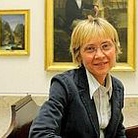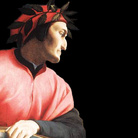LA MAPPA DELLE GUIDE
GUIDE
Artisti
 ARTISTI | Caravaggio
ARTISTI | Caravaggio
Michelangelo Merisi
1571 - 1610 Formatosi in patria con il bergamasco Simone Peterzano, si trasferì a Roma nel 1592 dove iniziò lavorando con pittori come Antiveduto Grammatica e il Cavalier d’Arpino. Ammalatosi, ... > ARTISTI | Pablo Picasso
ARTISTI | Pablo Picasso
Pablo Picasso
1881 - 1973 > ARTISTI | Michelangelo
ARTISTI | Michelangelo
Michelangelo Buonarroti
1475 - 1564 Fu scultore, pittore, architetto e poeta. Entrò dapprima nella bottega di Domenico Ghirlandaio (1488) e poco dopo nel circolo artistico del giardino di San Marco, patrocinato da Lorenzo il Magnifico. ... > ARTISTI | Vincent Van Gogh
ARTISTI | Vincent Van Gogh
Vincent Van Gogh
1853 - 1890 Appartenente a una famiglia di orefici e mercanti d’arte, nacque da un pastore protestante. Nel 1869 iniziò a lavorare per la casa d’arte Goupil, per la quale realizzava riproduzioni ... > ARTISTI | Andrea Mantegna
ARTISTI | Andrea Mantegna
Andrea Mantegna
1431 - 1506 Formatosi nella bottega padovana dello Squarcione, viene a contatto con le novità dei toscani di passaggio (Filippo Lippi, Paolo Uccello, Andrea del Castagno, Donatello). Si distingue per la perfetta ... >Guide d'autore
 GUIDE D'AUTORE
GUIDE D'AUTORE
Lorenza Mochi Onori
Storico dell'Arte Lorenza Mochi Onori, nata a Città di Castello, si è laureata con prof. Giulio Carlo Argan, nel 1978 è stata assunta in qualità di Ispettore storico dell'arte nella carriera ... > GUIDE D'AUTORE
GUIDE D'AUTORE
Luca Beatrice
Critico d'arte Critico, curatore, amante dell’arte, della musica e della Juventus. Luca Beatrice vanta un’esperienza ricca, dinamica e aperta alle novità.Nato a Torino nel 1961, dove tuttora vive, ... > GUIDE D'AUTORE
GUIDE D'AUTORE
Sandrina Bandera
Storico dell'arte Si è laureata in Storia dell’Arte all’Università di Firenze nel 1975; ha ottenuto prestigiose borse di Studio: nel 1976 presso la Fondazione Roberto Longhi e dal 1977 al 1980 ... > GUIDE D'AUTORE
GUIDE D'AUTORE
Massimiliano Fuksas
Architetto Architetto di fama internazionale, Massimiliano Fuksas è un simbolo e un punto di riferimento per la moderna architettura.Di origini lituane, è nato nel 1944 a Roma dove ha fondato il suo ... > GUIDE D'AUTORE
GUIDE D'AUTORE
Peppe Servillo
cantante e compositore Originario di Arquata Scrivia, Peppe Servillo all’età di vent’anni inizia l’avventura musicale degli Avion Travel, band tra le più raffinate del panorama italiano e consacrata ... >Opere
 OPERE | Andrea Mantegna
OPERE | Andrea Mantegna
Natura Morta
A partire dagli sfondi di alcune nature morte "a base quadrata" del 1953 Morandi iniziò a disporre, sul piano del tavolo, semplici scatole di carta che, dal 1956, conquistarono il primo piano: ... > OPERE | Andrea Mantegna Morandi
OPERE | Andrea Mantegna Morandi
Battistero
Chiesa di Santa Maria presso San Satiro Il Battistero con pianta ottagonale a due ordini di lesene e cupola viene progettato dal Bramante (ma largamente reintegrato nell’Ottocento). Fra le lesene del primo ordine si aprono nicchie alternativamente ... > OPERE | Bramante
OPERE | Bramante
Abside
Duomo L’ambiente è stato ristrutturato su progetto dell’architetto senese Paolo Posi fra il 1741 e il 1744. Sull’altare troneggia la scultura dell’Assunta del romano Pietro Bracci; ... > OPERE | Bramante
OPERE | Bramante
Campanile
Chiesa di San Samuele A destra della facciata si può ammirare, sebbene in parte inglobato nella Casa Franceschini, uno dei più antichi campanili conservatisi a Venezia. Alto trenta metri, venne eretto alla fine ... > OPERE | Bramante
OPERE | Bramante
Ritratto di Vecchio
Biblioteca Reale Un Leonardo ormai anziano, con una lunga e folta barba, lo sguardo accigliato rivolto a destra, fa capolino da un foglio talmente deteriorato, al punto da essere esposto al pubblico solo raramente.Questo ... >itinerari
 ITINERARI
ITINERARI
Firenze Segreta
Come ogni città anche Firenze nasconde piccole curiosità ed infiniti segreti che ravvivano e alleggeriscono la visita, non sempre rilassante, del turista. E cosi, ci si può ritrovare ... > ITINERARI
ITINERARI
Dorsoduro. La passeggiata dei veneziani
Al primo raggio di sole i veneziani si riversano a Dorsoduro, lungo la banchina che costeggia il Canale della Giudecca. Le Zattere, questo è il nome della passeggiata che ha inizio all’altezza ... > ITINERARI
ITINERARI
Dante e gli altri personaggi illustri a Firenze
Firenze è la culla della nostra lingua perché alla base dell'italiano moderno c'è il fiorentino letterario del Trecento, secolo in cui la città, oltre che nelle lettere, primeggiava ... > ITINERARI
ITINERARI
La Grande Guerra e il nazionalismo
La "via Sacra", che costeggia le rovine del porto fluviale, unisce idealmente i resti maestosi di età romana al complesso basilicale: romanità e cristianità sono così collegati ... > ITINERARI
ITINERARI

















